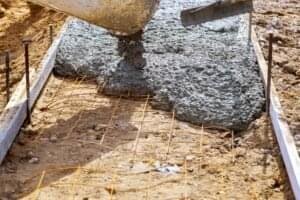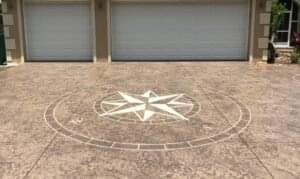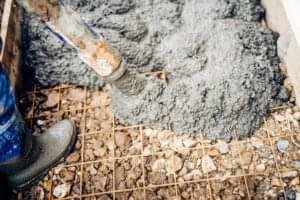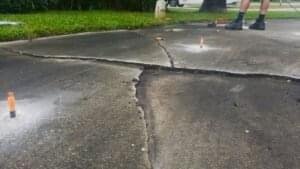In Lubbock, concrete steps are a popular option due to their strength and longevity. However, if you’re considering alternatives, there are several materials that provide different aesthetics and functionality.
Invest in the beauty and functionality of your home. Contact the best concrete contractor in Lubbock today to discuss your project and receive expert guidance.
Expert Concrete Steps Services in Lubbock, TX
Phone: (806) 375-7740
1. Brick
Brick steps offer a classic and elegant look that enhances curb appeal. They are durable and can be arranged in different patterns to create a unique design. They may require occasional repointing and sealing.
Pros:
- Timeless appeal
- Wide range of colors and patterns
- Durable with proper maintenance
Cons:
- If not installed correctly, it may shift over time.
- Requires sealing to prevent moisture damage
2. Natural Stone
For a luxurious and natural look, natural stone is the best alternative. Limestone, granite, or bluestone stairs blend well with outdoor landscapes and add a luxurious touch to your property. They require skilled installation to ensure longevity.
Pros:
- Unique natural appearance
- Extremely durable
- Increases property value
Cons:
- Higher installation cost
- Can become slippery when wet
3. Wooden
Wooden stairs are a budget-friendly and visually appealing alternative. They are best for garden pathways, patios, and decks. Pressure-treated wood or hardwoods like cedar and redwood are ideal for resisting rot and insect damage.
Pros:
- Affordable and easy to install
- Provides a warm, rustic look
- Can be customized with stains or paints
Cons:
- Requires regular maintenance
- Shorter lifespan compared to masonry materials
4. Paver
Paver stairs are made from individual cement or clay pavers that interlock to form a sturdy structure. They offer design flexibility and can be installed with different colors and patterns.
Pros:
- Highly customizable
- Slip-resistant surface
- Easier to repair
Cons:
- Can shift if not properly installed
- May require sealing to maintain color
5. Metal
Metal stairs can be a good choice for a modern or industrial style. Galvanized steel or aluminum stairs are often used for commercial properties, but they can also be incorporated into residential designs.
Pros:
- High durability
- Lightweight and weather-resistant
- Minimal maintenance required
Cons:
- Can become hot in direct sunlight
- Limited design options
Why Choose Concrete Steps?
While these alternatives offer great choices, they remain one of the best long-term investments for homeowners in Lubbock. They provide superior durability, endure severe weather, and require little maintenance. There are multiple benefits of adding concrete steps, from enhancing accessibility to increasing property value.
If you are looking for expert installation or repair, Lubbock Concrete Contractor is here to help. Their team ensures expert work with a focus on durability and precision.
Call Now to Get a Free Estimate!
Contact Details:
Call: (806) 375-7740
Frequently Asked Question(s)
Wooden stairs are typically the most affordable alternative, though they require regular maintenance to prevent rotting and insect damage.
Stone stairs offer a natural and upscale appearance, but they are generally more expensive and require skilled installation.
Concrete offers the most design flexibility. It can be shaped, colored, and textured to match any style. Pavers also offer good flexibility in terms of patterns and colors.
If not installed on a solid base, they may shift. Professional installation can prevent this issue.
Absolutely! They can be colored, stamped, and textured to match any design style.





